Hunting Guide









For ways we can help you and your loved ones visit HillCountryMemorial.org
IMMEDIATE CARE CLINIC
Offer quick, convenient and high-quality care for non-emergent issues and illnesses.
Fredericksburg 1031 S State Hwy 16 (830) 992-2820
Open 7 days a week. Mon-Sat 8am-8pm, Sun 10am-6pm
ER - 24/7 EMERGENCY CARE
Fredericksburg 1020 S State Hwy 16 (830) 997-4353
At Hill Country Memorial, we are dedicated to providing remarkable health care. Being remarkable is more than a moment in time. Being remarkable requires years of excellence, day after day. That’s why we commit ourselves to you today, tomorrow and into the future.
From family medicine, internal medicine, pediatrics, and other specialties, HCM has medical offices in Fredericksburg, Kerrville, Johnson City, Marble Falls, and Boerne. We are here when you need us.
Visit: hillcountrymemorial.org/doctor/find or call (800) 578-0631 with questions about our services.


A product of Fredericksburg Publishing Company. 712 W. Main St. | P.O. Box 1639
Fredericksburg, Texas 78624 Phone 830-997-2155




www.fredericksburgstandard.com


Publisher/Editor - Ken Esten Cooke
About the cover: This trophy axis was spotted at Joshua Creek Ranch in Boerne on Nov. 15, 2018. Bucks like these can be found all throughout the Texas Hill Country. — Photo courtesy Brian Grossenbacher © 2022 Fredericksburg Publishing Company. No portion may be reproduced in whole or in part by any means, including electronic retrieval systems, without permission of the publisher.





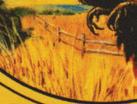






Hunters are starting to make preparations for the 2022-2023 hunting season in the Texas Hill Country.

big game season for white-tailed deer and other wild game such as turkey, quail and dove draw in hunters from around the United States for its notably successful harvests.
“Overall, the 2022 year is expected to be good in terms of harvest numbers and opportunities, so don’t let the chance to spend time afield with family, friends and fellow hunters pass you by,” said Alan Cain, White-Tailed Deer Program Leader for TPWD. “Texas has one of the longest deer seasons in the nation, so take some time this fall and winter and enjoy the best herds in the country right here in your home state.”


Cain noted that while harvest numbers may look good, drought impacts on deer habitats mean hunters should gener ally expect average-to-below average antler quality and body weight this fall.

Additionally, archery hunters have reported seeing fewer deer at feeders, as recent rains have improved habitat con ditions, providing an abundance of native forage that means deer won’t have to travel far to find something to browse. Ar chery hunters are having to alter their hunting strategies to find harvest success, Cain said.
Temperatures in the early summer months frequently soared above 100 degrees across most of the state, and lack of signif icant rainfall limited the spring production of important food sources like forbs (weeds) and woody shrubs for deer.
“Woody plants are critical in times like these because these deep-rooted plants are often the only abundant supply of green groceries for deer, but even these browse plants are showing some signs of stress,” said Cain. “Mesquites appear to be on track to produce an abundance of beans this year and were critical sources of natural forage for deer in late summer in the central, south and western portions of the state.”
Wildfires have plagued large areas of the state as well, caus ing significant habitat loss and damage, but Cain said nature finds a way to rejuvenate the landscape.
“Where fires have occurred, there’s been new grass and weed growth providing some much-needed nutrition and cover for deer,”
industry in Gillespie County, hunting season brings in sportsmen from


the state,
of big bucks and other wild
Cain said. “Although habitat conditions have improved immensely with recent rains, the timing was a bit late to have any meaningful influence on antler quality.”








The archery-only season in the designated North Zone (to which Gillespie County belongs) for turkey and deer runs from Oct. 1-Nov. 4.
General rifle season for turkey and deer starts Saturday, Nov. 5, and runs through Sunday, Jan. 1, 2023.
Youth-only hunting week ends, for those licensed hunters 16 years of age or younger, are planned on Oct. 29-30, 2022, and Jan. 2-15, 2023.
A special late season during which harvests are restricted to antlerless deer and spikes, runs simultaneously to the late youth-only season, from Jan. 2-15, 2023.
Archery hunters are required to purchase an Archery Endorse ment in addition to their hunting license.
Hunters taking advantage of Texas Public Hunting Lands must have the Annual Public Hunting Permit.
Public land hunters should also consult the Public Hunting Lands Map Booklet to review regula tions that may apply to specific areas. The My Texas Hunt Har vest app can be used to complete on-site registration electronically at a public hunting area.
Those interested in learning more about archery and bow hunting, or anyone who is look ing to brush up on their skills ahead of the season, are encour aged to explore Bowhunter by Fall, a newsletter series present ed by TPWD’s Community Ar chery Program.
Aside from whitetails, Gillespie County is also considered to be in the Central Zone for dove hunt
ing.
Dove season runs from Sept. 1 through Oct. 30, and then again from Dec. 17 through Jan. 15, 2023.
The quail season across Texas will run Oct. 30 to Feb. 26, 2023.
Information on bag limits, li cense requirements and other general information is available from the Texas Parks and Wild life Department’s Outdoor An nual or at tpwd.texas.gov/regula tions/outdoor-annual/.
The Texas Hill Country also has an abundant amount of nongame wildlife such as armadillos, raccoons, hawks, opossums, coy otes and numerous other birds, not to mention an occasional porcupine and skunk.
Among the factors account ing for the large populations of deer and other forms of wildlife in the Fredericksburg area is the rugged, hilly terrain, which af fords plenty of cover, vegetation and water to sustain the animals year-round.
In other parts of Texas, the ter rain is flatter and less wooded, perhaps even converted to farm land. Also, the increasing devel opment of housing and expand ing city limits in other places has forced wildlife out of its natural habitat.
Gillespie County values wild life.
Farmers, ranchers and resi dents hold animals in high re gard not only because of their presence, but also because of their contributions to the area’s economy.
TPWD reminds hunters that TPWD wildlife biologists and
General rifle season for the North Zone, which includes Gillespie County, will begin Nov. 5 and end on Jan. 1, 2023. — Standard-Radio Post file photo
animal health officials are col lecting and testing Chronic Wasting Disease (CWD) samples from hunter-harvested deer to get a clearer picture of the preva lence and distribution of the dis ease across Texas.

Proactive monitoring improves the state’s response time to a CWD detection and can great ly reduce the risk of the disease further spreading to neighboring captive and free-ranging popula tions.
Hunters in surveillance and containment zones must meet submission requirements of har

vested CWD susceptible species. Additionally, hunters outside of established surveillance and con tainment zones are encouraged to voluntarily submit their har vest for testing at a check station, for free, before heading home from the field.

A map of TPWD check stations for all CWD zones can be found on the TPWD website.
For more information about CWD, visit https://tpwd.tex as.gov/huntwild/wild/diseas es/cwd/ or https://www.tahc. texas.gov/animal_health/elkdeer/#cwd




Young hunters will get their opportunity to bag big game during special hunting seasons in fall and win ter.

Texas Parks and Wildlife De partment has established state wide youth-only open seasons for deer, turkey, squirrel and water fowl for hunters ages 16 and un der in counties across the state, including Gillespie County.
The purpose of youth-only open seasons is to provide young people with opportunities to learn about wildlife conservation through an enjoyable and memo rable outdoor experience. It also gives parents and mentors an opportunity to introduce them to safe and responsible hunting, according to a spokesman for the TPWD.
The youth-only open season hunts are scheduled to occur at times when young outdoorsmen and women are out of school.
A Youth Hunting License (Type 169) is required to hunt during this season, and costs $7. The license can be purchased at any one of TPWD’s field offices, more than 50 state parks or at over 1,700 retailers across the state.
Licenses may be purchased on line through the TPWD website at www.tpwd.texas.gov/buy. A $5 administrative fee is charged for each phone or online transaction.

Hunters under the age of 17 can get a chance to bag a buck of their own
slated for Oct. 29-30, and again from Jan. 2-15, 2023.
The first youth-only season runs Saturday and Sunday, Oct. 29-30, and another session runs from Jan. 2-15, 2023.
The season is open in all coun
Submitted photo
ties where there is a general open season for white-tailed deer.
All legal hunting means and methods are allowed.
Collin, Dallas, Grayson and Rockwall counties require an ar

chery endorsement.
For much of the state, includ ing Gillespie County, the bag and permit requirements are the same as for the general season in the county.
Hunters may take no more than five white-tailed deer and no more than three bucks (all seasons combined) in one license year.
Youth hunters also have a chance to bag turkeys during special youth-only seasons on Oct. 29-30, and Jan. 2-15, 2023.
A youth-only spring season on March 25-26, 2023 and May 2021, 2023 will give young marks men and archers another chance to hunt turkeys.
Only licensed hunters 16 years of age or younger may hunt tur key during this season with the bag limit as specified by the gen eral fall turkey season.

The annual bag limit for tur key, in the aggregate for all coun ties, is four, no more than one of which may be an Eastern turkey.

For more information on the Texas Parks and Wildlife De partment’s youth-only hunting seasons, as well as other general hunting information, log onto the website: www.tpwd.state.tx.us.


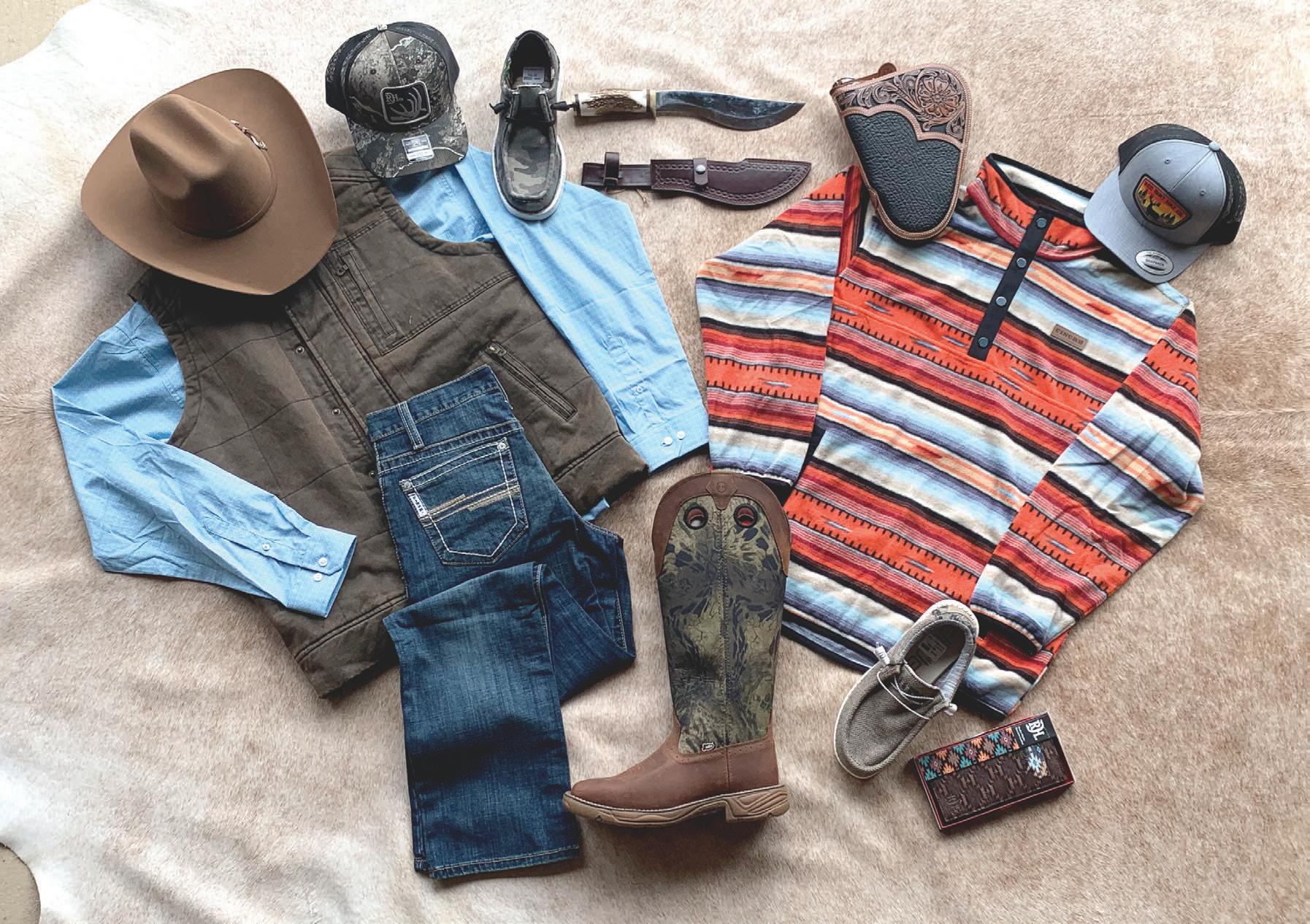



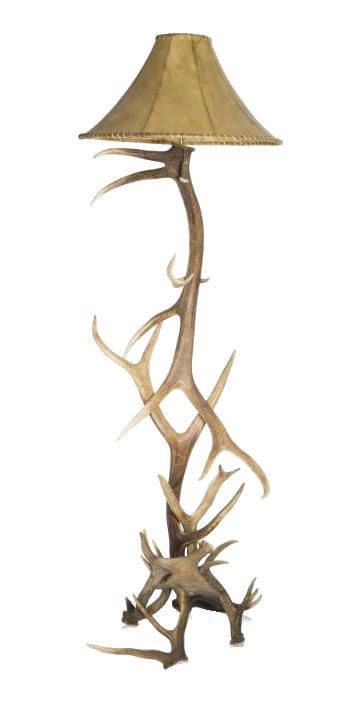
With the opening of deer season on the hori zon, Texas Parks and Wildlife Department (TPWD) biologists are asking hunters and landowners throughout the state to be mindful of Chronic Wasting Disease (CWD) as new cases of the disease have been discovered in multiple counties throughout Texas.
In September, CWD was con firmed in deer breeding facilities in Gillespie and Limestone coun ties.
Following confirmation in Gillespie County, immediate ac tion was taken to secure all deer at the facilities and plans to con duct additional CWD investiga tions are underway. Additional ly, other breeding facilities that received deer or shipped deer to this facility, during the last five years, have been identified and placed under movement restric tions.
CWD is a fatal neurological disease found in certain cervids, including deer, elk, moose and other members of the deer family.
The disease is highly conta gious, never goes dormant and can remain infectious on the landscape for several years. If left unmanaged, CWD can have long-term impacts on the native deer herd and local economies.
Symptoms may not become evident until long after animals have become infected, so testing is the best tool available for de tecting CWD at the earliest stage of infection possible and contain ing it with appropriate manage ment strategies.
Clinical signs may include pro gressive weight loss, stumbling or tremors with a lack of coordina
tion, excessive thirst, salivation or urination, loss of appetite, teeth grinding, abnormal head posture and/or drooping ears.
To date there is no evidence that CWD poses a risk to humans or non-cervids. However, as a precaution, the U.S. Centers for Disease Control and the World Health Organization recom mend against consuming meat from infected animals.
Testing for CWD allows wild life biologists and animal health officials to get a clearer picture of the prevalence and distribution of the disease across Texas. Pro active monitoring improves the state’s response time to a CWD detection and can greatly reduce
the risk of the disease further spreading to neighboring captive and free-ranging populations.
With each discovery of a new CWD positive area in the state, CWD zones are established as a strategy to manage and contain the disease. TPWD officials will be working toward delineating and establishing a new zone in Gillespie County to be imple mented later this fall.
Proposed check stations and drop boxes (24/7 self-service access) are in Harper (Harper Community Park, 211 Harper Pioneer Park St.) and Doss (loca tions to be determined).
A surveillance zone covering almost 200,000 acres in Duval,

Jim Wells, Live Oak and McMul len counties will be implemented for two years after feedback was received in the August meeting of the Texas Parks and Wildlife (TPW) Commission. This zone will take effect prior to the 20222023 hunting season and TPW commissioners will consider the resulting data presented by Texas Parks and Wildlife Department (TPWD) staff to assess the need for continued surveillance in the established zone.
This zone will include land be tween U.S. Highway 281 to the east, Farm to Market Road 624 to the north and U.S. Highway 59 to the west. The southern border follows a series of roads includ ing County Road 101, Highway 44, County Roads 145, 172, 170, and 120.
This zone also includes the cit ies of Alice and Freer, as well as highways 59, 44, and 281 between the cities and the main body of the surveillance zone. This will provide a legal means for hunt ers to transport whole carcasses to deer-processing facilities and/ or CWD check stations located in those cities rather than having to quarter the carcasses first.

Hunters outside of established surveillance and containment zones are encouraged to volun tarily submit their harvest for testing at a check station for free before heading home from the field. A map of TPWD check sta tions can be found on the TPWD website.

For more information about CWD, visit https://tpwd.tex as.gov/huntwild/wild/diseas es/cwd/ or https://www.tahc. texas.gov/animal_health/elkdeer/#cwd


Over 19,000 boys and girls who live in child residential and foster homes have not only participated in hunting and fishing but have helped address the overpopula tion of deer in the Hill Country by taking part in the “Take a Child Hunting Program” hosted by Operation Orphans.
“Operation Orphans is a non-profit organization that pro vides children with unique and wonderful outdoor experiences by sponsoring hunting and fish ing trips in the Texas Hill Coun try since 1960,” according to the event website. “In many cases, this is the first such real experi ence these children have been able to do.”
Dates selected for the 2022-23 season are Oct. 29, Girls’ Hunt No. 1; Nov. 19, Boys’ Hunt No. 1; Dec. 3, Boys’ Hunt No. 2; Jan. 14, 2023, Boys’ Hunt No. 3; and Feb. 4, 2023, Boys’ Hunt No. 4. Operation Orphans, Inc., based at Camp Gene Ashby, in Mason County, along the Llano River, has taken kids who are wards of the state hunting since 1960.
Gene Ashby was the brainchild behind the free hunts. The Texas game warden worked with lo cal ranchers to allow orphans to hunt on their lands.

The groups come to Camp Gene Ashby on designated dates and hunt on area ranches.
The ranches use this program as a way to harvest excess ani mals, usually whitetail does.
They also assist in educating these youngsters on the joys and responsibilities of hunting.
Each child will have at least one guide who will spend the day with them.
During the girls’ hunt, each girl
will have a woman or a man and woman team to serve as guides.
Individuals who volunteer as guides will have successfully completed the Hunter Safety Course and will have been sub ject to a background check.

This all began when a local Texas game warden, Ashby, saw the need to do something to ad dress the overpopulation of deer in the area.
Left unchecked, many of the animals would starve and suffer. It was also known at the time that many orphan homes and child residential facilities were struggling financially.
By offering those youngsters an opportunity to hunt and harvest

“You can’t forget memories.”
-Hondo Crouch
deer, the facilities would benefit from the meat obtained, thus lower ing their food costs. It would also offer these kids who often felt un wanted or who had suffered so much, a chance to enjoy the outdoors.
Local individuals joined the cause and ranches opened their places for the kids to come and harvest antlerless deer.
Camp Gene Ashby became the headquarters for Operation Or phans. Today Camp Gene Ashby can house and feed over 250 people.
In 1994, an orientation/recreation building, the Milton and Janie Jordan Building, was constructed.

It includes a clothing room which allows the kids to obtain new and gently used items they may need for the hunt or for school.

Operation Orphans, Inc. can provide the children, guides, and food for the activity.

Some landowners offer their ranches to hunt, while others guide or prepare lunch for the attending groups.
Most ranches allow doe hunting only, while others may allow the harvest of spikes or management bucks. Feral hogs may be also har vested.
Each landowner specifies what animals are allowed to be harvest ed.
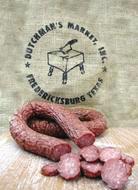

While hunting may be the planned activity, it is not the main ob jective.











When Operation Orphans started in 1960, only boys participated.

In 1980, a girls’ hunt was added. In 2004, boys’ and girls’ fishing days started. Just as with the hunting, the youngsters fish on area ranches in ponds, tanks and rivers. The fishing is catch and release unless the landowner states otherwise.

To date, over 1,100 boys and girls have enjoyed the “Take a Child Fishing” activities.
To further assist children who have participated with Operation Orphans, Inc., the Eddie Argo Scholarship was established.
Argo had attended the “Take a Child Hunting” program as a young ster in a home and later became a volunteer and director of Operation Orphans, Inc.
He died in 2008, but his memory lives on. Kids who have partici pated in the hunting or fishing program are able to apply to receive financial assistance with their education.
Operation Orphans, Inc. is a non-profit organization made up of a board of directors whose sole purpose is to serve less fortunate youngsters by offering them a positive outdoor experience.
Additional information, videos and signup forms may be found on the Operation Orphans, Inc. website: www.operationorphans.org.
More information is available by contacting camp supervisors, Lyla or Jerry Crouch, by phone at 325-347-6745 or by email at opera tionorphans@yahoo.com





In2013, and a few weeks shy of graduation at Harper High School and enlistment into the United States Navy, Ja cob Krebs was swimming and training at the Hill Country Me morial Wellness Center in Fred ericksburg.
One afternoon while he was there, he knew he would be prac ticing underwater drills and told several other swimmers what he was doing.
He would swim several laps and stop, try to hold his breath and look at his watch to time himself. He set a benchmark and then would try to surpass it.
Unfortunately, Krebs experi enced a shallow water black out and was found unresponsive at the bottom at the pool.
Krebs was airlifted to San An tonio where he remained uncon scious for six days and put on a respirator. His family prayed for a miracle and miracles were per formed that day, but not the one
his parents were looking for.
Krebs lost his life that day but he saved the lives of five others through organ donation. His lungs were healed, even after he drowned. His lungs were successfully transplanted into a Vietnam War veteran who flew in medical helicopters and res cued wounded soldiers. Since that day, Jacob has also en hanced the lives of more than 97 more people through bone, tissue and allografts.
Krebs was also an Eagle Scout and strongly believed a person should “do a good turn daily”.
Especially if the recipient was a veteran. He also loved the out doors and hunting. He loved to volunteer with the Texas Youth Hunt Program and became an assistant hunter education in structor, helping other youth learn about conservation and the great outdoors.
After Krebs died, his par ents wanted to honor him and
Jacob Krebs of Harper was training for enlistment in the U.S. Navy when he drowned. The memorial hunt honors the memory of this exceptional young man who loved the outdoors.
the military, and especially the youth of the country’s military.


Nine years ago, the Krebs
family began hosting youth hunt weekends specifically for wounded soldiers and their chil dren. This will be the 10th year to host the hunt held in Harper, Jan. 13-15, 2023.
The Harper Wildlife Manage ment Association and Freder icksburg Salutes our Wounded Warriors have co-sponsored the hunt in years past along with the Texas Wildlife Association (TWA) and the Texas Youth Hunt Program (TYHP). The Harper community and land owners volunteer their time and ranches one weekend a year, and welcome the youth and their families.
The hunt is not designed to “just harvest a deer,” but pro vide an educational awareness of hunter safety, land manage ment, conservation and stew ardship.



“TYHP gives young Texans the opportunity to participate in


Cont. from 16









youth hunting activities safely, legally and ethically, while learning about the valuable role landowners and hunters play in wildlife con servation,” said a spokesperson for the hunt.

The hunt hosts roughly 25 youth of military, children ages 9-17, to give them the opportunity to participate in youth and hunting ac tivities.

The hunt is not only designed to harvest a deer but also provides educational awareness of hunter safety, conservation, land manage ment and stewardship.

TYHP gives young Texans the opportunity to youth hunting activ ities safely, legally and ethically, while learning about the valuable role landowners and hunters play.
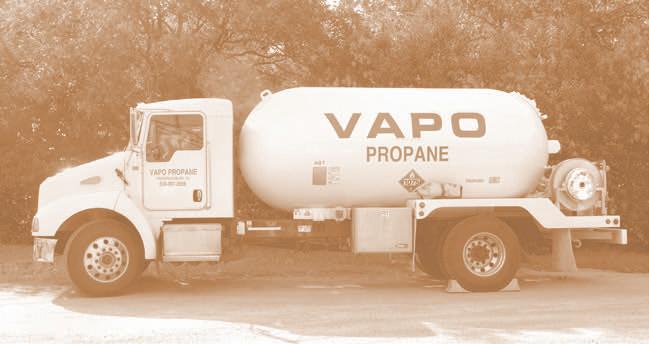
For more information about the upcoming hunt Jan. 13-15, contact William Krebs at krebslaser@yahoo.com or 830-889-2860 or follow Harper WMA Youth Hunt in memory of Jacob Krebs on Facebook.

Gillespie County Wild Game Din ner (WGD) is back for its 16th year at the Gillespie County Fair Grounds on Satur day, Nov. 19.
evening includes wild game appetizers, a barbecue meal, beverages, games, prize drawings,

auction and a prize drawing supporting youth agricultural education projects in the Texas Hill Country.
open at 5:30 p.m. with food served until it runs out. The event will conclude around 10 p.m.
tickets are available for $25 at Arrow
Bank, Stroeher & Olfers, Lochte Feed, Allied Ag Services or online at https://buy.ticketstotheci ty.com/venue.php?org_id=597.

Magnificent Seven is the featured prize drawing. A limited amount of 500 tickets will be available for the chance to win an $8,200 grand prize of seven premier firearms paired with a 26-gun Win chester safe. Second prize is a $1,000 gift certifi cate to Los Cazadores and third prize is an $800 gift card to H-E-B Fredericksburg. Tickets for the Magnificent Seven drawing are $100 each or 7 for $500. The winner need not be present to win.
Familiar fare of shish kebabs, chili, sausage, stew, and gumbo featuring exotic game such as

actiOn
9mm talO sa 12 rd. pistOl w/red dOt tristar lt 410 gauge O/u 28” shOtgun
palmettO lem PSA-15 m4 5.56 rifle w/m-lOk rail
dOt henry GOlden BOy
akkar s 20 gauge camO

lever actiOn rifle
sauer p365 9mm luger sa 10+1 pistOl
white-tailed
wild tur key, wild
sheep, elk,
sta tions
Gillespie County’s finest 4-H and FFA students.
with all the trimmings
area, food court and tents for games and dining
be available for all ticket holders.

Traditional prize drawing tick ets are also available for $5 each or six for $25 with prizes cover ing all interests from outdoor ac tivities and travel to dining and gift items. Winners need not be present to win.
“Gillespie County Wild Game Dinner is an exciting evening, raising funds to enhance youth leadership and agricultural ed ucation in Gillespie County,” said Lester Meier, WGD board member. “We have something for everyone — jewelry, artwork, hunting supplies, archery items and gift certificates, just to name

a few with values up to $2,300.
More than 200 volunteers, hundreds of sponsors, donors, business owners, out-of-town hunters and patrons who sup port the event are key in help ing raise money for the youth of Gillespie County.
WGD has raised $1.4 mil lion since 2007, which supports youth agricultural education in Gillespie County by funding equipment and projects for area schools, green house and hor ticulture programs, youth live stock shows, agriculture student leadership trips to Washington, D.C., 4-H adult education and youth experiences, Gillespie County AgriLife Extension Ser vice, Gillespie County CORE Academy, YALL Tour, NRCS Range Management Schools, Fredericksburg FFA, Harper FFA and Gillespie County Fair and Festivals Association.
For more information, visit the Gillespie County Wild Game Dinner Facebook page or email
Wild game of all types will be served at the event, which usually draws in over 200 volunteers. — Standard-Radio Post file photo

GCWildGameDinner@gmail. com or call Shawn Lehne at 512567-4682 or Charlie Wilson at 210-288-8434.
The Wild Game Dinner has raised $1.4 million since 2007. Proceeds benefit youth agriculture education here.


Promoting good stew ardship of the land and natural resources while improving the quality of whitetailed deer is the mission of four wildlife management associa tions in Gillespie County.

The four wildlife management associations include Cave Creek,


Cherry Spring, Doss and Harper. The associations are under the umbrella of Texas A&M AgriL ife Extension Service, Gillespie County.
Along with their efforts to help manage the deer population, all four groups have sponsored youth hunts to expose children to
hunting and the outdoors.
The Cave Creek WMA was the first in the state to offer such a program.
Following is information on the four groups:

Cave Creek WMA
With approximately 61 mem
bers, the Cave Creek Wildlife Management Association covers 29,905 acres of the eastern part of Gillespie County.
Officers include Keven Eck hardt, president; Troy Spies, vice president; Carol Birmingham, secretary, and Larry Ahrens,
The organization meets three to four times a year.
All meetings are open to the public and individuals wanting more information or to join are encouraged to contact any of the officers.
Members conduct three spot light census surveys and collect data for Texas Parks and Wildlife Department.
“By counting the number of fe males, males and fawns, we are able to get an idea of the buckto-doe ratio and fawn crop,” a spokesperson said.
Due to the abundance of acorns last year, hunting was hard and deer were not forced to move from the bedding grounds.
“We could possibly see a slight increase in population this year,” the spokesperson said.
The Cave Creek WMA will be hosting a meal, prize drawing and social on the Friday night before the opening weekend of hunting season.
During opening weekend, the Cave Creek WMA will have a big buck contest, cull buck contest, and a doe pot for members and hunters.
All entries will be weighed and aged. The winners will be deter mined on Sunday night at 8 p.m.
Covering about 19,203 acres in the north-central part of Gilles pie County is the Cherry Spring WMA.
The group has a membership of

53 people.
Wilfred Crenwelge is the pres ident of the organization. Other officers include Dale Dittmar, vice president, and Alice Klein, secretary/treasurer.
Meetings, which are open to the public, are held in February, August and October.
Anyone in the north-central part of Gillespie County can join the Cherry Spring WMA by pay ing the yearly dues. Currently, dues are $25.
Most meetings include a pot luck dinner and presentations by speakers, including representa tives from Texas Parks and Wild life Department.
Members conduct three deer counts in August, September and the first two days of the whitetail hunting season.
The association also hosts a youth hunt in January with vol untary participation by landown ers.
Members also participate in Kerr and Mason wildlife areas.
One of the goals of the group, according to Crenwelge, is to pro vide guidance in wildlife man agement and related resources.
Another goal is to help land owners produce high quality and healthy wildlife.
A reason to join the group, Crenwelge said, is to help land owners develop best manage ment practices for improving wildlife and to help landowners achieve the same goals and man agement practices as their neigh bors.
The Doss Wildlife Manage ment Association (WMA) was started in the early 1980s by a group of local ranchers, wildlife biologists and extension agents, and includes northwest Gilles pie County/South Central Mason County.
Currently, there are 86 mem bers encompassing 81,984 acres.
Officers are Cory Brandon, president; Preston Studer, vice president, and Jill Pilcher, secre tary-treasurer.
The association holds an annu al meeting in late October and a membership sign-up in late June or July. Meetings are open to the public.
Individuals interested in join ing are invited to attend the membership sign-up meeting, the annual meeting in October or by contacting any of the officers.
Annual membership dues are $25, which includes a lease per mit.
The Doss WMA includes seven census lines that perform three separate spotlight counts in Sep tember.
The census line counts provide data which is used by wildlife biologists to determine harvest recommendations for the fall white-tailed hunting season.
Doss Wildlife Management Association strives to bring landowners together to ensure a healthy and stable deer popula tion.
The organization’s goal is to share ideas, techniques, and ex
periences that will enable all members to have a successful hunting season for both them selves as well as their hunters; while maintaining a balanced doe to buck ratio.

“Hunting is both a great pas time as well as an economic boost for our community,” Bran don said.
The youth hunt is a possibility with some modifications.
The Harper Wildlife Manage ment Association (HWMA) is one of four wildlife management associations in Gillespie County committed to successful game management practices, including habitat management, providing population data through various census techniques, recommend ing harvest levels based on deer censuses, maintaining accurate harvest records and recommend ing supplemental or enhanced food supplies.
It includes 73 members and covers 56,662 acres.
Membership is open to any landowner, land manager, hunter or any other interested individu als owning property, operating property, living in or hunting in the area defined by the bound aries of the Harper Independent School District.

Cooperation of members is on a voluntary basis in an area-wide effort to achieve the goals of bal ancing whitetail deer popula tions with the carrying capacity


Cont. from 21
of the habitat, increasing body weight of white-tailed deer in the area, improving the overall antler characteristics, increasing fawn survival, promoting ongoing education among members and pro moting community interest in wildlife management in general, ex plained Michelle Brangenberg, president of the Harper WMA.

The Harper WMA holds three meetings annually which are open to members and visitors. Meetings are held in July, October and January or February.


The Harper WMA will sponsor its Annual Youth Hunt in cooper ation with the Texas Youth Hunting Program this season. The youth hunt is being held in memory of the late Jacob Krebs and is primari ly for children or grandchildren of wounded warriors.

For more information or to apply for the youth hunt, visit www. tyhp.org.

In addition to Brangenberg, other officers of the Harper WMA include Will Krebs, vice president, and Pam Ransleben, secretary/ treasurer.
Directors are Richard Cowie, Brian Haschke and Steve Holeka mp.

Joyce Moore of TPWD serves in the capacity of Technical Guid ance Biologist in the Western Edwards Plateau Region.
Contact Brangenberg by email at mlbrangenberg@aol.com with any questions or comments related to the Harper WMA.
Fredericksburg Standard-Radio Post has set guidelines for 2022-2023 hunting season photo submissions for print.



qualify for free publication, photos must meet the following criteria:
• All animals pictured must be legally-harvested following all Texas regulations;
• Either the animal or the hunter must be from Gillespie County;
• Only the hunter who shot the deer may appear in the photo with the animal
no exceptions;
• Each hunter may submit no more than one photo per season
no exceptions;
• The animal’s entire carcass must be present and attached to the head. (No caped out or head-only/antler-only photos will be accepted.);
• Pictures of does or spikes will not be accepted;
Mondays through Fridays from 8 a.m. to 5 p.m.
regular business hours
available staff photographers will take photos of those stopping in at the newspaper office, 712 West Main Street. (Such images are in digital format and reprints will be made available for purchase through the newspaper’s online site, found at: www.fredericksburgstan dard.smugmug.com.)
Submit a photo
Hunters may submit color photographs by emailing original, un edited images as separate .jpg attachments to: fbgnews@fredericks burgstandard.com.
Digital submissions should be 300 pixels per inch or higher in res olution. Pictures of low resolution or otherwise poor quality in re gard to lighting, framing and sharpness, will not be accepted. Photos printed on home printers and taken with older cell phones are gen erally not acceptable.
Complete and include the following information:
1. Name of the hunter and the city in which they live.
2. If the hunter is a youth, include his/her age, parents’ names and their cities of residence, if this was the hunter’s first buck and who was accompanying the youth while hunting.
3. Daytime contact phone number.
4. Specific location the deer was harvested (i.e. property or ranch name and general location in the county).
5. Time and date of the kill.

6. Number of points on the buck. (Newspaper staff will not be re sponsible for counting points, so that number must be provided be fore publication will take place.)


7. Measurements of the antlers, including width and height, and, if applicable, a Boone & Crockett score.



8. Field-dressed weight of the deer, if available.
All photos from the 2022-2023 season will be published no later than the Feb. 1, 2023 issue. Any hunters wishing to see their photos in print should submit them in a timely manner so the photo may be processed properly in time prior to the cut-off date.
The hunting world is going digital, as the Texas Parks and Wildlife Department offers a pair of mobile apps that afford hunters more choices in how they access infor mation when hunting.

The My Texas Hunt Harvest mobile app of fers:

• Mandatory hunt harvest reporting;
• Resident game species harvest log;
• Harvest history;
• Photo library and sharing;

• GPS details in harvest history.
The app is available for download at tpwd.tex as.gov/myhunt or by searching MY Texas Hunt Harvest in a cell-phone app store.
The Texas Outdoor Annual mobile app offers:

• Updated hunting, fishing and boating regu lations for each season;


• Access to TPWD hunting guide;
• Offline access to regulations;

• Location-based information on hunting and freshwater fishing seasons and locations.
The app is available for download at out doorannual.com or by searching Texas Outdoor Annual in a cell-phone app store.
Texas Parks & Wildlife offers two smartphone apps to help hunters in the field or sitting behind their computer.
The My Texas Hunt Harvest allows for electronic tagging of animals, while the Texas Outdoor Annual contains the most up-to-date hunting rules and regulations.
“During the remainder of the day we passed through a flat country and found a great many deer. We saw around us, al most at the same time, as many as three or four hundred of these animals.” — Juan Antonio de la Pena, 1722
“The deer are so numerous, that they are often found in herds of several thou sands.” — Francis Moore Jr., 1840
“Deer of about the size of our largest fallow deer, and in herds of from ten to a thousand, are common in every part of the country.” — Arthur Ikin, 1841
Although the sight of whitetail deer (correctly identified as white-tailed deer) in herds of upwards to a thousand in num ber may seem difficult to believe, many early settlers and ex plorers in Texas — even as far back as the 1700s — made reference to such tremendous herds in diaries, journals and letters home. In some portions of the (future) state, whitetail herds were larger than buffa lo, an animal that few people have trouble in accepting as gathering in herds that large.
To these early Anglo settlers, and the indigenous people that came and lived before them, the deer was easily accessible food. So accessi ble, in fact, that by as early as 1840, settlers began to notice a severe drop in whitetail numbers.
Only a minute portion of this tremendous decline can be attributed to subsistence hunting. The larger impact came from land encroach ment, competition from newly introduced livestock, and, just as with the buffalo, senseless and unjustified slaughter.
The extent of this slaughter is well described by John C. Reid who in 1857 wrote:
“Various modes are adopted, by the citizens here, for killing the wild animal. Game is ever in season. Thousands of deer are slain by the light of the fire pan; by snares and pitfalls, by laying concealed near holes of water or “licks”; stooping in the tall grass and attracting those in sight by occasionally tossing in the air an unfurled red hand
kerchief; or shooting those gentle enough to allow you to approach. They are often beguiled by the docility of others already domesticat ed; by driving them towards standers in waiting; by chasing upon fleet horses and lassoing them.”
While these methods are almost unconceivable to sportsmen today, the numbers by which deer were slaughtered is almost incomprehen sible. Although there was no official census taken in the years during Anglo settlement, it is estimated that there could have been between 30 million and 125 million deer roaming the land that would become Texas. By 1900, it was estimated that there were only 500,000 deer in the entire United States.

Like the buffalo, deer were slaughtered almost to the point of no return.


With government intervention and the establishment of strict game laws, deer rebounded quite quickly. By 1990, the number of deer in Texas had reached between three and four million.

Just how well deer rebounded is made apparent when considering

“Today we camped at Tejocote Creek, having traveled 14 miles; the pigs found at this place were as big as a five- or six-months calf.” — Jose Enrique de la Pena, 1836
“The wild hog also is fre quently met with, and, al though it has never been known to make a voluntary attack upon a man, yet, when pro voked, it is a very furious and formidable animal. These hogs are descended from the domes tic swine, and have become wild by running at large in the woods.” — Mary Austin Holley, 1836
Feral hogs have been in Texas so long and are so prolific that most people forget that they’re
not indigenous to the state.
There are an estimated two million feral hogs in Texas, and even Texas Parks and Wildlife Department admits this num ber is probably on the low end.
Hogs are second only to white tails in terms of game hunted in the state.
In Texas, feral hogs are of a mixed — if not completely com plicated — lineage. They are de scendants of escaped European domesticated hogs, as well as European wild hogs released for sport hunting by early settlers.
With erect dorsal hair that re sembles a Mohawk, sharp, pro truding tusks, and an almost indestructible hide, many argue that Russian boars must be in cluded in the mix somewhere, as well. While this matter is high ly contested, in Texas the term “Russian” has become a syn onym for hogs with these char

acteristics.
Feral hogs roam throughout the state, inhabiting almost every type of topography, but seem to be most prolific in the eastern and southern portions of the state. Regardless of where they live, evidence of their exis tence is easy to find due to the destruction they leave in their path.
Hogs are a combination of bulldozer and garbage disposal.
They will eat almost anything, including crops, browse, forbs, roots, fruit, small animals and carrion.


They can destroy fields by rooting for food or by creating shallow depressions called wal lows. They can eliminate such ground-nesting species as quail and turkeys from an area by de stroying nests and nesting sites and can destroy fences traveling to their next destination.
Hogs in Texas vary in weight and height due to the numerous bloodlines and breeds in the mix but most stand at or around less than 40 inches and weigh be tween 100 to 300 pounds. Hogs of between 400 to 700 pounds are not unheard of although the latter is fairly rare.
With such large size, razor type tusks, and an unstoppable tenacity, hog hunting in Texas can be an extremely exciting — or nerve-racking — undertak ing. Some hunters compound the rush by hunting with dogs and either handgun or knife (yes, knife).
For those not looking for quite as much excitement, hunting from stands, over water holes, or by spot and stalk are the most common methods.
that the average number of deer legally taken in the state is close to what the population of the en tire country was in 1900. In fact, in some areas of the state, deer are actually dangerously over populated.
What whitetails eat is partially determined by where they live. In the Hill Country for example, deer graze twice as much as they browse. Over 67% of their feed ing time is spent eating grasses and forbs. In South Texas, the numbers are almost reversed. Deer browse twice as much as they graze. Percentages and diet are altered considerably when supplemental feeding and land management are entered into the equation.
Just as with their diet, whitetail
Cont. from 26
weight is heavily determined by where deer live. Deer in the East ern portion of the state and in the Hill Country tend to be smaller in body than those in South Tex as or on the upper plains.
In general, though, whitetail average from between 70 to 150 pounds.

In terms of color, whitetails are grayish brown or grayish blue in winter with their coat taking on a reddish-brown tinge in winter. Under parts are lighter in color, if not white.
True to their name, whitetails have a white tail that stands erect when fleeing danger. Antlers grow outward from the back of the head before curling slightly forward. Each tine grows off a main beam.
After a long day in the field, hunters can wind down, stretch their legs and en joy all that Fredericksburg and Gillespie County has to offer.
Live music of all styles and eras fills the Fredericksburg air every weekend as musicians entertain visitors and locals, alike, with styles ranging from soothing to up-beat, classical to rock and roll and everything in between.
On weeknights and weekends, dozens of clubs, restaurants and dance halls feature live enter tainment. There are also special theater productions, festivals and concerts that happen throughout the year.
The Fredericksburg Stan dard-Radio Post features a weekly listing of live music in the “Stages” section of SCENE in the newspaper. The list is compiled by the Fredericksburg Conven tion and Visitor Bureau.


Fredericksburg Theater Com pany will host the third annu al Texas Hill Country Cowboy Gathering on Nov. 4 and 5.
The two-day festival of song, story, poetry and art features in ternationally acclaimed, region al and local talent. Songwriters, poets, balladeers and artists will celebrate the legend and cowboy spirit in everyone.
Tickets are available at https:// www.eventbrite.com/e/tex as-hill-country-cowboy-gather ing-tickets-406249783037
For more information, go to https://www.texashillcountry cowboygathering.com
Located “99 steps off Main Street,” the Rockbox Theater is a 392-seat indoor venue at 109 N. Llano St. that offers a wide as sortment of live music, bands and
tribute shows.
Set on stage during hunting season are various events.
The venue will be hosting several shows throughout the hunting sea son. One show, “Howl at the Moon Dueling Piano Experi ence,” will occur at 8 p.m. Friday, Oct. 28, and will feature a high-en ergy, live Dueling Piano show.
The vocalists take song re quests from the crowd and offer some laugh-outloud comedic im provisation.
Tickets aver age between $28 and $36, and can be purchased at https:// rockboxtheater.thundertix.com/ events/200538?_
991.1752550828.1665685675307710143.1665685675
More information and tick ets are available at www.rock boxtheater.com.
On Nov. 28, Hill Top Café will host the 25th annual Big Band Bash at its location at 10661 U.S. 87 North.
The bash is from Thursday through Sunday, Nov. 10-13. The cost is $100 per person. Cav ern room is $75 and the Sunday brunch is $20.
There will be three bands per night. Each night, at the end of the final set, a special surprise guest will perform with a band backing them. Artists are to be announced.
The past several years, the pro gram has underwritten a sum mer theater arts camp by paying
half of all tuition for students.
Reservations are required for the Texas All-Star Big Band Bash by calling Hill Top Café at 830997-8922 or by visiting www. hilltopcafe.com. Reservations can be made at 830-997-8922.
Hunters can also …

• Enjoy live music and a cold beer in historic Luckenbach Tex as, located eight miles southeast of Fredericksburg.
Call 830-997-3224 for more in formation.
• Experience a gun show by Texas Gun and Knife Shows at the Gillespie County Fair Grounds from 9 a.m. to 5 p.m. Saturday, Oct. 29, and 10 a.m. to 4 p.m. Sunday, Oct. 30. Events are subject to change.
Call Janice Hill at 830-2850575 for up-to-date information.
• Take a ghost tour with Fred ericksburg Ghost Tours, www. fredericksburgghosts.com.
• Take friends and family to en joy a large menu, live music and a
full bar at Hondo’s on Main, lo cated at 312 W. Main St.
Call 830-997-1633 to see who is playing.
• Buy propane supplies at Vapo Propane, 1201 E. Main Street.
• Stock up on deer corn and other hunting supplies at Allied Ag, 255 Loring Street, Stonewall.
• Get hunting licenses, guns, ammo and camping supplies at Biedermann’s Ace Hardware, 1102 E. Main St., Ste. B or 830997-7611.
• Enjoy fresh meats, cheeses and sandwiches or pick up sau sage-making supplies at Dutch man’s Market, Inc. at 1609 E. Main St.
Check out local entertainment each week in the SCENE section of the Fredericksburg Standard Rdaio Post.

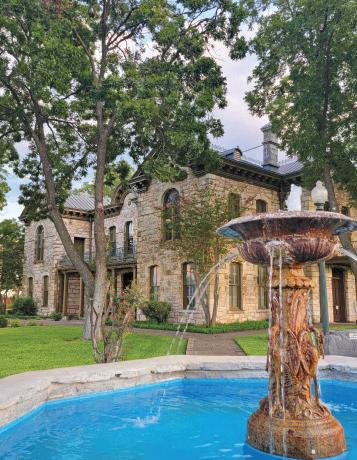

















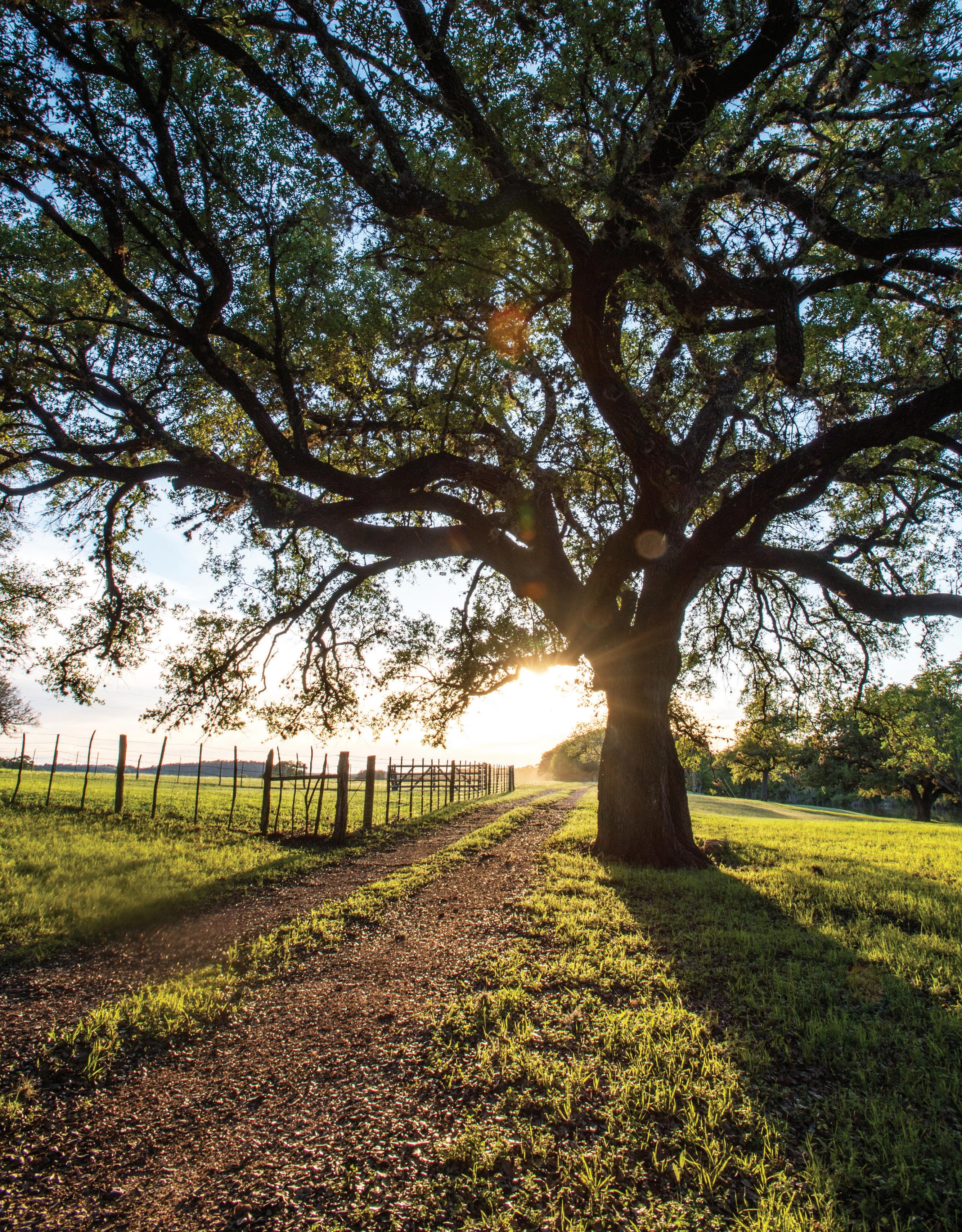
Our
Whether